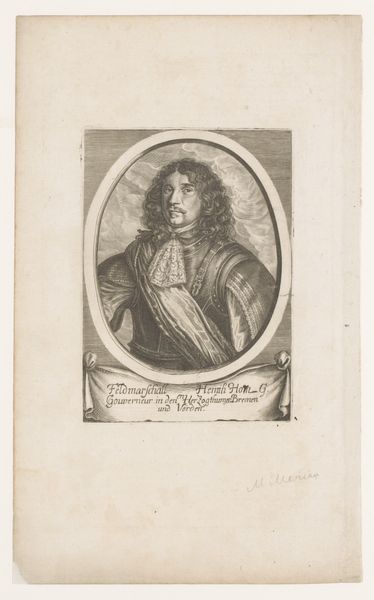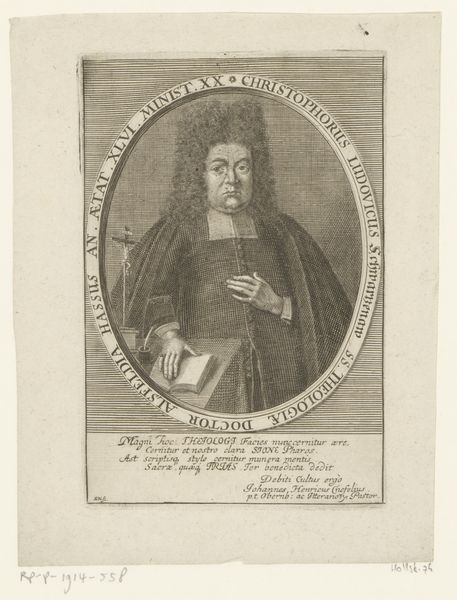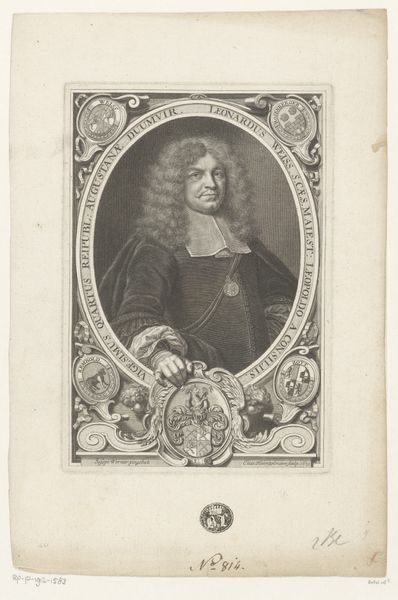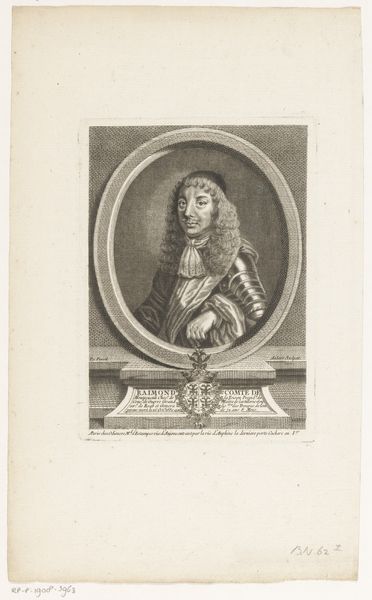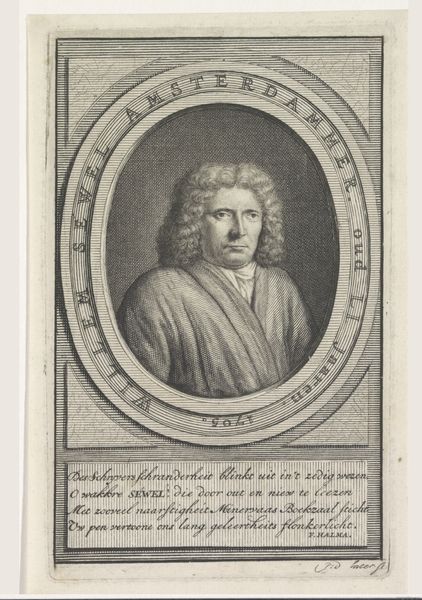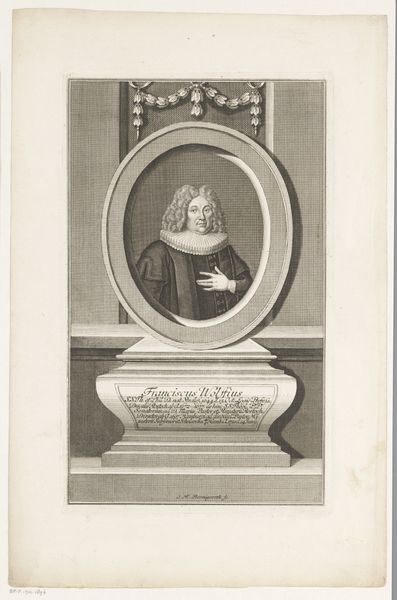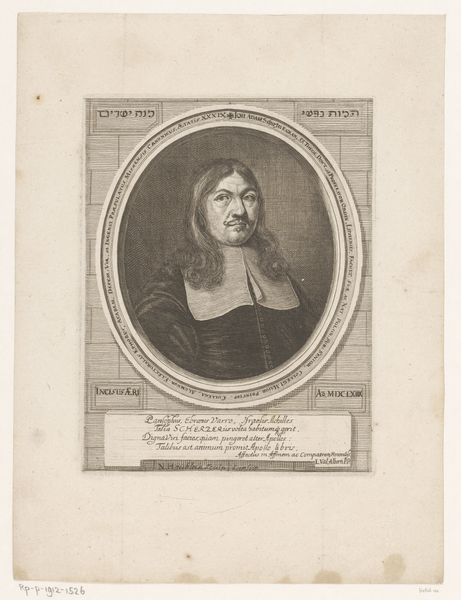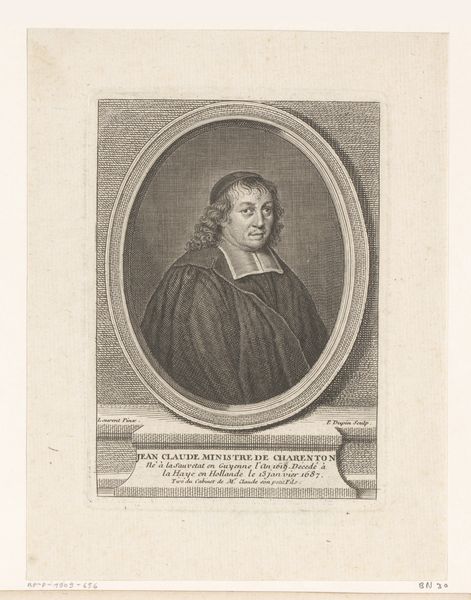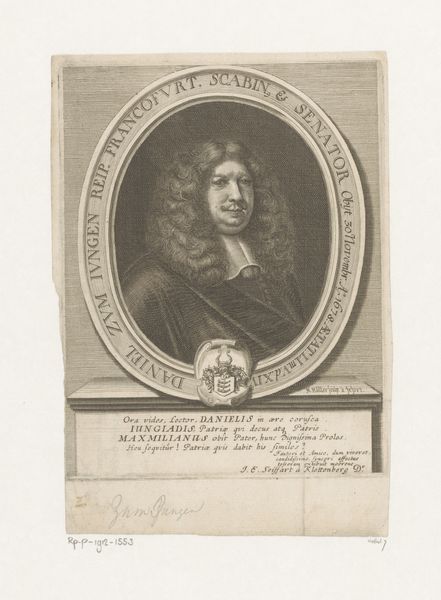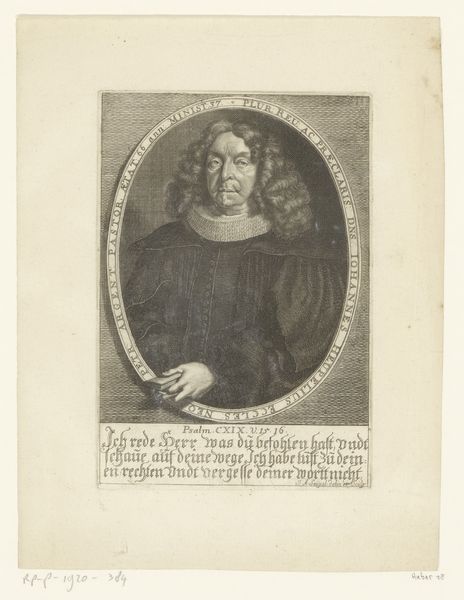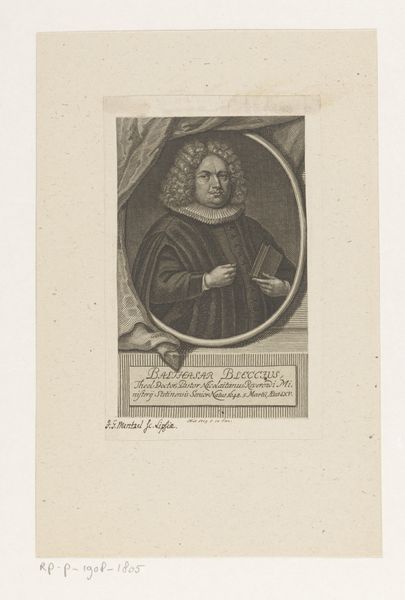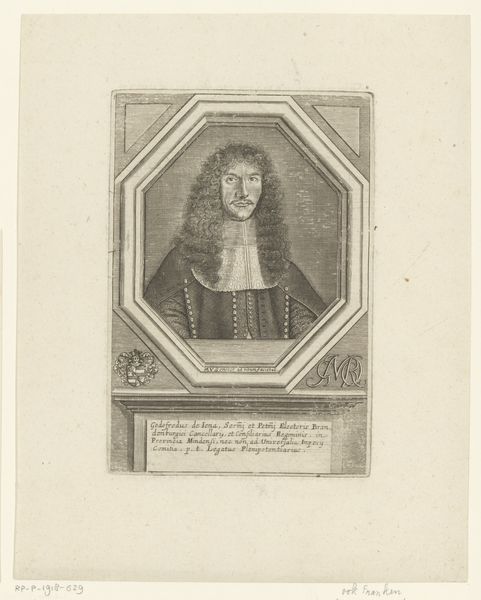
print, paper, engraving
#
portrait
#
baroque
# print
#
old engraving style
#
paper
#
engraving
Dimensions: height 176 mm, width 146 mm
Copyright: Rijks Museum: Open Domain
Curator: Just look at this portrait—the textures, the line work! There’s something deeply contemplative about this work on paper. Editor: You’re right. It's interesting. At first glance, though, it's quite imposing and somber—very black and white. Does this have a religious feel to it to you? Curator: Yes, but that somber feel is deceiving I believe, what you are seeing here is titled *Portret van Johannes Jacobus Otho Hala-Suevus.*, created sometime between 1661 and 1699 by Cornelis Nicolaus Schurtz. It feels significant, almost a memorial piece—and that certainly plays with how it strikes us. Editor: Knowing its an engraving gives some context, printmaking in the Baroque era often acted as the CNN of the day: spreading ideas through portraiture and the reproduction of popular paintings and other cultural phenomenon of the day.. A work like this emphasizes status but also becomes very interesting when the subjects and artists start experimenting with form as the technologies for capturing form improved. Curator: True, look at how Schurtz balances formal likeness with something deeper—you know? He presents Otho Hala-Suevus surrounded by inscriptions and emblems; it transcends pure documentation. This subject wants to be known! Editor: The circular inscription enclosing his portrait makes a bold statement, I almost feel as though the portrait could be used on currency in our day. That frame almost creates an otherworldly essence of protection or maybe being deified. Curator: Perhaps Schurtz is saying something through placement; maybe those weren't placed their merely as decorative ornaments, maybe its actually to indicate his values of a more deeper understanding to God himself. Editor: Seeing the layers like this has brought out so much nuance that were not apparent, from a distance. These historical details enrich everything that once felt dark and heavy; it makes for such a lively, interesting piece that can resonate today, almost across any religion or sect.
Comments
No comments
Be the first to comment and join the conversation on the ultimate creative platform.
